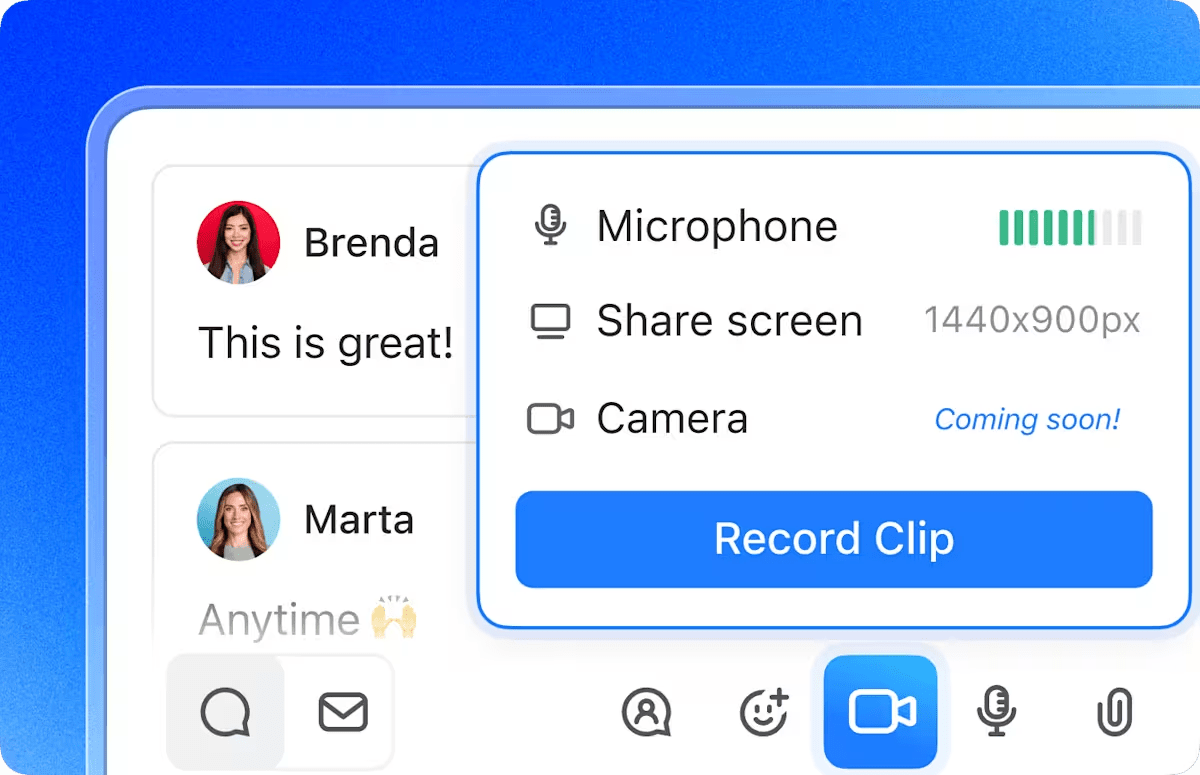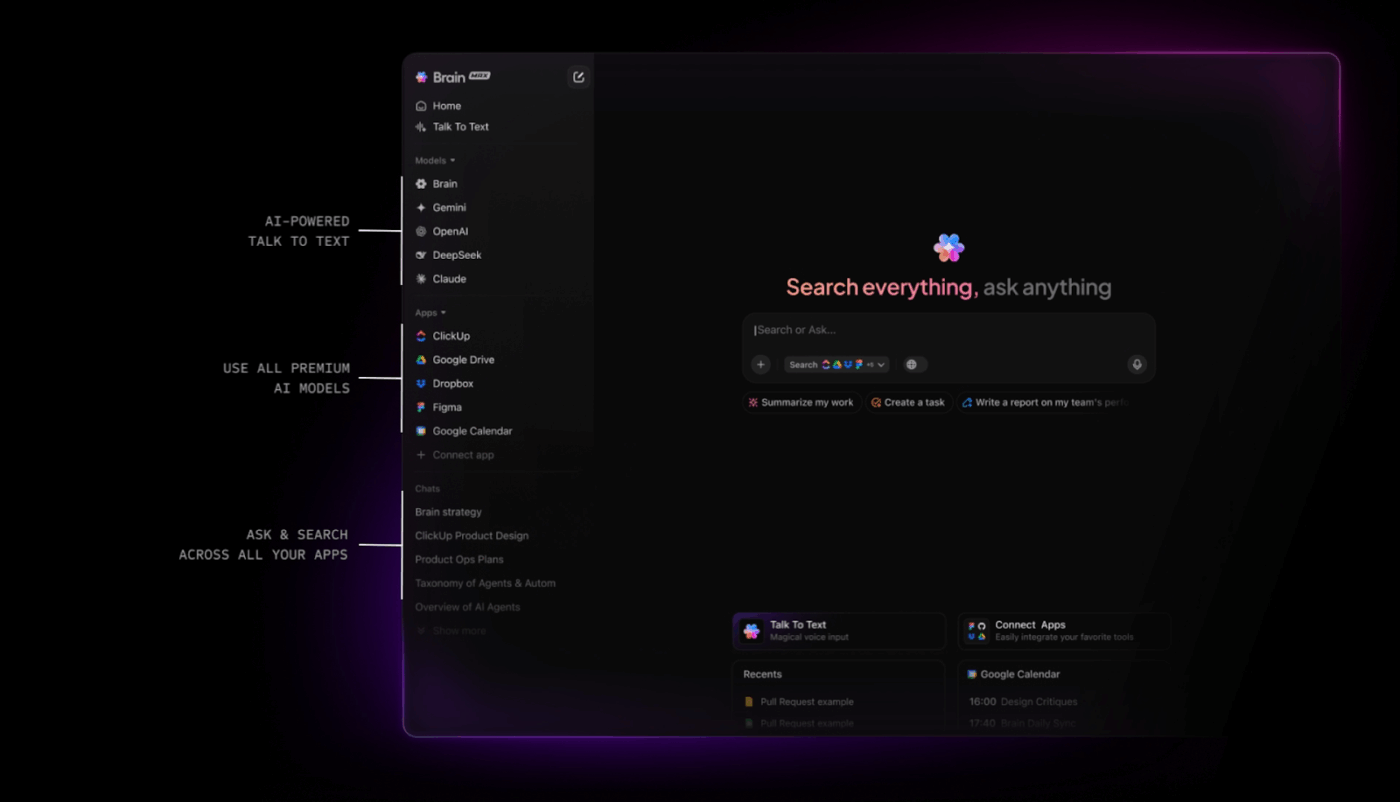How to Make a Training Video at Work?

Sorry, there were no results found for “”
Sorry, there were no results found for “”
Sorry, there were no results found for “”

Training videos stand out as one of the most effective methods for explanatory, instructional, or informative content for agile learning.
From employee onboarding to professional training sessions, they’re used for various use cases. Compared with in-person training, video training offers better engagement, knowledge retention for complex concepts, accessibility, shareability, and analytics.
However, many people struggle to create interactive training videos. If you do, here’s a detailed guide on how to make a training video at work. But first, let’s cover the basics.
Training videos are highly effective for workplace learning because they combine measurable performance data with a strong learning experience—so teams can both engage learners and prove impact.
What makes video training impactful? Two types of elements go into this—quantitative and qualitative.
Focus on these quantitative factors to create an interactive training video:
A great training video should neither be too short that it misses out on important details nor too long that employees lose interest. Ideal length of a video depends on content complexity, the average attention span of viewers, and the type of the video.
Introductory videos can take 1-5 minutes, whereas skill training and product training videos with detailed content can go up to 30 minutes.
Metrics like average watching time and interaction (likes, comments, reposts) help determine viewers’ participation and create engaging videos.
Moreover, completion rate metrics reveal the video’s ability to engage the audience till the end.
Calculating the ROI of training videos is an excellent method to quantify their effectiveness. Compare the training production and implementation costs, such as the cost of equipment to the revenue generated through employee upskilling and training.
The qualitative factors to determine the effectiveness of a training video include:
Seek feedback from the viewers on the relevance of video content for their learning objectives, role, or a particular project. You can add the link to a short feedback survey at the end of the video or in the comments.
Check the effectiveness of training videos by gauging the overall user experience. Some of the questions you must ask are: Was the video easy for the viewers to navigate? Did it maintain a proper flow? Did it include interactive elements, and what was straight on point or had irrelevant information?
Effective training videos should follow a backward design approach—identifying the learning outcome and designing the training content around that. The content should also be clear and easily digestible. It should cover all the important aspects of the topic. A great training video focuses on one problem and its solution,
Let’s see the elements you need to create a good instructional video for a training program:
Educational technology has revolutionized training videos by enabling educators and creators to provide personalized content. Modern edtech platforms comprise advanced tools for recording high-quality training videos and interactive elements such as quizzes and polls.
Learning management systems (LMS), an integral edtech component, allow you to create elaborate employee training plans and track training videos and other learning material. You can also view analytics to track each employee’s engagement metrics and learning progress.
Employee training videos can take multiple formats depending on what you’re teaching—step-by-step skills, concept explanations, hands-on processes, or live interaction.
Let’s see the different types of training videos you can create at the workplace.
Whether it’s product demos, software tutorial videos, or compliance instructions―all can be done through how-to videos where you provide step-by-step tutorials to the viewers. The perfect video length of how-to corporate training videos varies with the complexity of a topic. Usually, people prefer 3-6 minute videos, but it can go up to 20 minutes for more complex topics.
The purpose of explainer or instructional videos is to provide in-depth information on technical concepts or processes, such as internal and external communication or documentation.
You can also use an explainer animated training video for customer support and education to provide information about product features or how to integrate the software with other apps.
These videos offer instructional training at certain locations, like factories. They explain how to use equipment, follow processes, and adhere to compliances and protocols. You can also record on-site training videos to familiarize remote employees with the office.
You must have seen the screencast option on your mobile or computer screen. A screencast video is a recording of your computer or mobile screen, along with audio narration. You can use it to record software demonstrations or some educational content.
Such videos are a cost-effective way to share or teach new ideas to your audience, as they don’t require training video software.
A presentation training videos, often known as a presenter style video, typically include a speaker on a screen guiding through a concept. They are also called talking head videos. These videos offer personalized and interactive learning.
Presenters use various techniques, such as animation, storytelling, and graphics, to induce interest among viewers and convey the information efficiently.
Live training videos are presenter-style videos in real time so that employees can actively participate in the training. They include interactive elements like quizzes and polls, among others. Not only that, but they also facilitate immediate feedback, discussions, and doubt-solving, making an immersive training environment. For example, a live training video is the best way for employee software training.
Live online training video is a specialized format that usually requires significant time and effort to create. Still, once brought into action, they’re the most effective tool to deliver effective training in a virtual backdrop.
To create a training video at work, start with a solid recording tool that supports screen capture, link embeds, and analytics—then follow a simple workflow from planning to polishing.
Now you know about different employee training video formats, how about creating one?
First, you need to download a user-friendly and robust video recording platform with advanced features, such as an instant screen recording facility, the option to embed links in videos, and video analytics.
ClickUp, an all-in-one platform for workplace management, provides all these features and more to create impactful online training videos.
With ClickUp Clips, you can record interactive training videos from your screen and share them with just one click. This feature also makes team communication faster and more efficient by allowing you to create tasks from clips. Use Clips to record product demos, share project progress, and give design feedback in just one click.

The best part? ClickUp Brain automatically transcribes the clips to find instant answers to search queries, increasing the accessibility of employee training videos.

Having the right tool solves about 50% of your blockers when it comes to making training videos. As for the rest, it’s all in the details. We’ve outlined step-by-step instructions to help you create training videos.
Start strong by deciding on an appropriate topic for the training video. For better clarity and concept, try to cover one or, at most, two topics within a training video.
But how should you select the topic? Here are a few points to consider:
You can begin by doing some research to learn about the target audience, their interests, and pain points.
Once you know the topic of the training video, it’s time to choose which video format would be appropriate for delivering your message.
For instance, if your training video requires you to demonstrate a new product, how-to videos will be more effective. Moreover, if the topic needs active engagement from the employees, then consider live training videos.
Jumping straight to video production without a defined script results in a disorganized training video. Avoid this by creating a concise script to deliver the key information in the video content and ensure proper flow. An excellent script for professional training videos involves three core elements—the hook, the content overview, and the CTA.
The hook is the most important part of the video, as it grabs the viewer’s attention and induces interest in the topic. Without a strong hook, your audience might skip your video at the first look.
Then comes the idea you want to talk about in your video. It’s important to break down the topic into smaller segments using simple language to help viewers understand the topic. You can also include visual elements like animation or slides to reinforce key points visually.
The last part, a call to action (CTA), prompts the viewers to take action.
You can use ClickUp Docs to write the script and ClickUp Whiteboard to visualize the content, including the steps, transitions, and visual elements in the video.
Need extra ammo? Check out ClickUp Brain MAX!

This is where the video script comes to life. Ensure that you’ve set the right environment for the recording process. Ideally, you should be in a quiet and distraction-free environment to create an effective training video.
If you are recording a training video for the first time, create a short test video of up to one minute to get familiar with the features, review the setup, and set the tone.
To record with ClickUp Clips, go to the left side menu on the ClickUp Dashboard, click on Clips, and select “Record a Clip”.

Video transcriptions make training videos more user-friendly as viewers can quickly find answers to specific queries. However, you don’t have to put zero effort into this. ClickUp Brain automatically transcribes all Clips. It also adds timestamps and snippets so viewers can go back to watch specific steps or concepts.
With the production part over, it’s time for the final touch. Editing your employee training videos to trim the unnecessary parts and add visuals helps you create great training videos.
Simply creating training videos doesn’t suffice—you need to make it more engaging so that they serve the learning purpose.
Follow these five simple tips for creating effective training videos:
Creating engaging training videos requires a lot of effort and resources. To make interactive videos, you need to strike a balance between informative content, the right format, and relevant visual tools.
ClickUp Clips make the entire process smooth for you. You can record, edit, and share video clips instantly with your team to provide detailed task instructions, project updates, or other information.
Sign up on ClickUp for free to record and share high-quality videos for effective communication!
© 2025 ClickUp